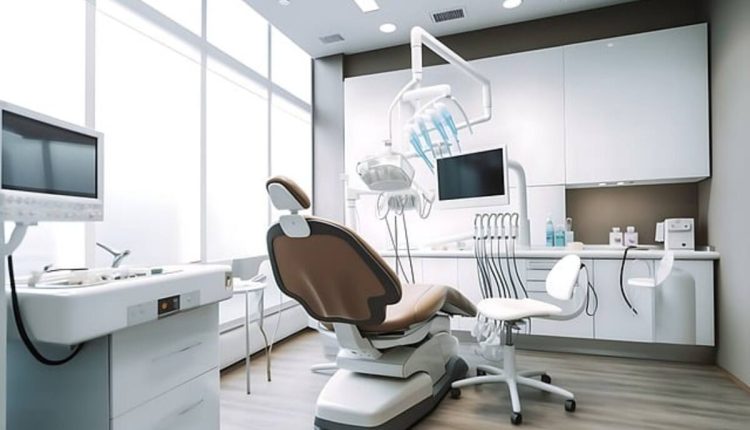Maintaining a hygienic environment in dental clinics is of utmost importance for dentists and their patients alike, which makes sterilization of instruments and tools through steam autoclaves all the more essential. What do you consider about اتوکلاو دندانپزشکی.
These devices expose reusable dental equipment to high-pressure and high-temperature steam for a set period. Various models suit different kinds of equipment, and some even feature pre-vacuum and post-vacuum cycles to ensure complete sterilization.
Class B
Dental clinics and practices rely on this type of steam autoclave to sterilize their tools and equipment, preventing infection among their patients and protecting themselves from exposure to non-sterile instruments. Autoclaves use high-pressure steam technology to kill pathogenic microbes and bacteria, leaving sterilized tools free from foreign materials that could potentially cause infections.
Class B autoclaves are engineered to remove all air from their chamber, making them more effective and safer than other forms of steam sterilizers. Their pre-vacuum cycles remove any remaining air in the chamber while handling multiple load sizes and configurations efficiently – an excellent solution for more extensive dental and medical practices.
Class B sterilizers offer greater versatility than Class N and S sterilizers, being capable of sterilizing porous loads, hollow instruments, wrapped items, and porous loads alike. However, their cycles tend to take longer, and they tend to be more costly compared with Class N and S sterilizers. Additionally, printers allow users to track sterilization processes—these features make Class B the choice of many dental and medical practices.
Class S
As dental practices strive to provide world-class health care, they require reliable and effective equipment to sterilize their instruments. When searching for steam autoclaves, simplicity, and easy operation are two major priorities. Various models are available on the market; however, not all may be suitable for use within dental clinics due to potential disadvantages or limited capacity considerations. Thus, capacity and laboratory space are the two key considerations when making decisions about which sterilizer best meets these criteria.
Class N autoclaves are ideal for small dental practices looking to save space while not requiring large capacities. Their straightforward system uses steam to push air downward, creating downward displacement that pushes out air through hollow or porous instruments – however, they cannot ensure complete air removal from hollow instruments due to limited downward displacement capabilities, and textile materials cannot be sterilized successfully; typically used instead to sterilize bagged products or those containing porous objects.
Celitron Azteca AC, a medium steam autoclave, features an advanced system designed to safely and reliably sterilize porous instruments at larger loads, along with pre-vacuuming that removes ambient air for excellent results. Furthermore, they come complete with warranties and technical services to maximize your return on investment.
Tuttnauer
With pandemic fever sweeping the world, sanitation has become an indispensable priority in many establishments and clinics worldwide. Dental autoclaves play a pivotal role in this effort and must be maintained to ensure they function correctly and efficiently.
Selecting an autoclave suitable for your practice depends on several factors, such as its volume and efficiency. Gravity cycle autoclaves, steam flush pressure pulse sterilizers, and cassette-style autoclaves are among the top choices available today. Some can even be upgraded to Class B via software updates, providing all of its benefits without spending thousands more for newer units!
An autoclave used for dental purposes uses high temperatures and steam to sterilize instruments and tools but can become vulnerable to bacteria and debris build-up without regular maintenance. Failing to follow maintenance guidelines could result in a gradual decrease in equipment quality over time.
Tuttnauer T-edge 11 dental autoclave is one of the most sought-after models on the market. It boasts a seven-gallon chamber that can fit up to five trays. Its user-friendly touchpad control, dual independent monitoring systems, and audiovisual alarms alert operators when their cycle has been completed successfully. In addition, this model features a wide door radius to facilitate loading/unloading more easily.
Vic Dental
Dental clinics cannot overstate the significance of an autoclave for reasons of patient safety and productivity. A suitable quality autoclave should always be prioritized regardless of price point; high-grade units will help increase productivity within any dental practice.
Dental autoclaves utilize steam sterilization technology for tool and equipment sterilization, making these machines highly efficient at quickly sterilizing an array of items. Easy to use and with superior safety standards in place, these autoclaves also save electricity by sterilizing more tools than manual methods while being economically advantageous by decreasing electric usage over time.
Some autoclaves use steam sterilization, while others rely on dry heat for moisture removal during their cleaning processes. Both options may be utilized in dental offices depending on which tools need sterilizing; traditional steam autoclaves, however, may cause irreparable damage to specific rubber and plastic instruments while taking too long to complete each cycle.
When purchasing a dental autoclave, be sure to buy one that includes both a warranty and technical service. A defective valve can cause significant damage; thus, a regular preventative maintenance schedule must be implemented depending on usage levels – monthly, quarterly, or annually.


